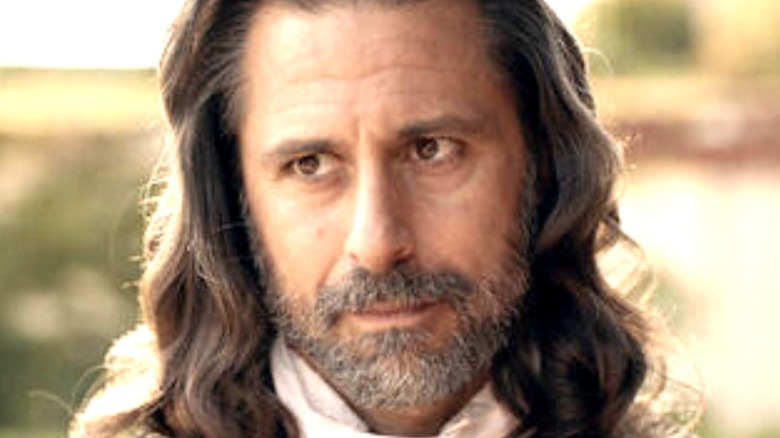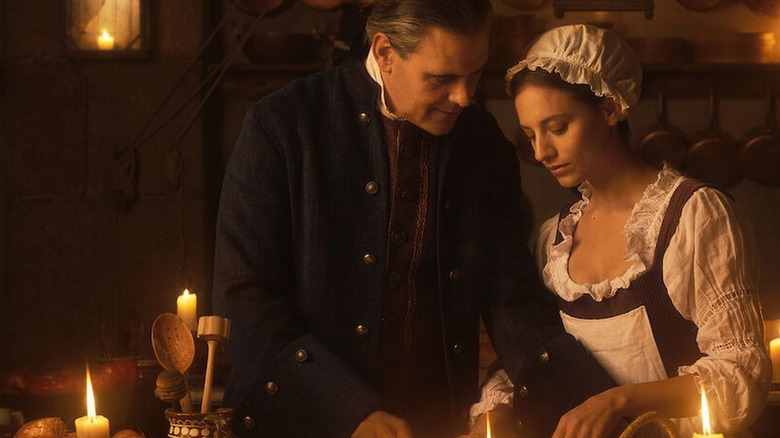Where Was The Cook Of Castamar Actually Filmed?
Fans of "Bridgerton" have an all-new period drama to get excited about on Netflix — one that's every bit as obsessed as the Shonda Rhimes smash-hit was with bringing the past back to life in ways both subtle and vivid. Tatiana Rodríguez' "The Cook of Castamar," (or, "La cosinera de Castamar") is based on the novel by Fernando J. Muñez, and though it originally aired in February on Atresplayer Premium, its recent debut on Netflix has garnered it a whole new gaggle of viewers.
The story, set in the early 1700s, focuses on an unlikely and scandalous romance between wealthy widower Diego de Castamar (Roberto Enríquez) and his "agoraphobic cook," (via IMDb) played by actress Michelle Jenner. But while the premise may be your typical boy-meets-girl-from-a-different-background romantic trope, the setting, aesthetics, intimate mise-en-scène, and decadent attention to detail in "The Cook of Castamar" gives it a vibe that's all its own. Part of that seduction, a big part of it, is thanks to the breathtaking Spanish scenery that envelopes the narrative.
Topography and Time Travel
Creators brought early 18th century Spain to life in "The Cook of Castamar" by filming on location in and around Madrid, Segovia, and Cuenca, Spain (via 20minutos.com), all of which imbue the series with an authentic, historical-but-dreamy, mood heavy air. Segovia, located to the northwest of Madrid, lies nestled between a scenic mountain range and the picturesque Eresma River. It also just so happens to be the home of castle Alcázar of Segovia, a UNESCO World Heritage Site that you may recognize for its obvious and heavy influence on the castle in Walt Disney's "Cinderella" (via Travel and Leisure).
Cuenca — located in the eastern part of central Spain and characterized by majestic, rugged cliffs and river gorges — maintains much of its medieval aesthetic, including the Historic Walled Town, founded by the Moors and replete to this day with castle ruins, cobblestone streets, and eclectic architecture. Combined with the inherent romance and range of history and culture alive and well in Madrid, and the various settings of "The Cook of Castamar" become an element every bit as integral to the story as its menagerie of complex characters and detail-oriented period costumes.

